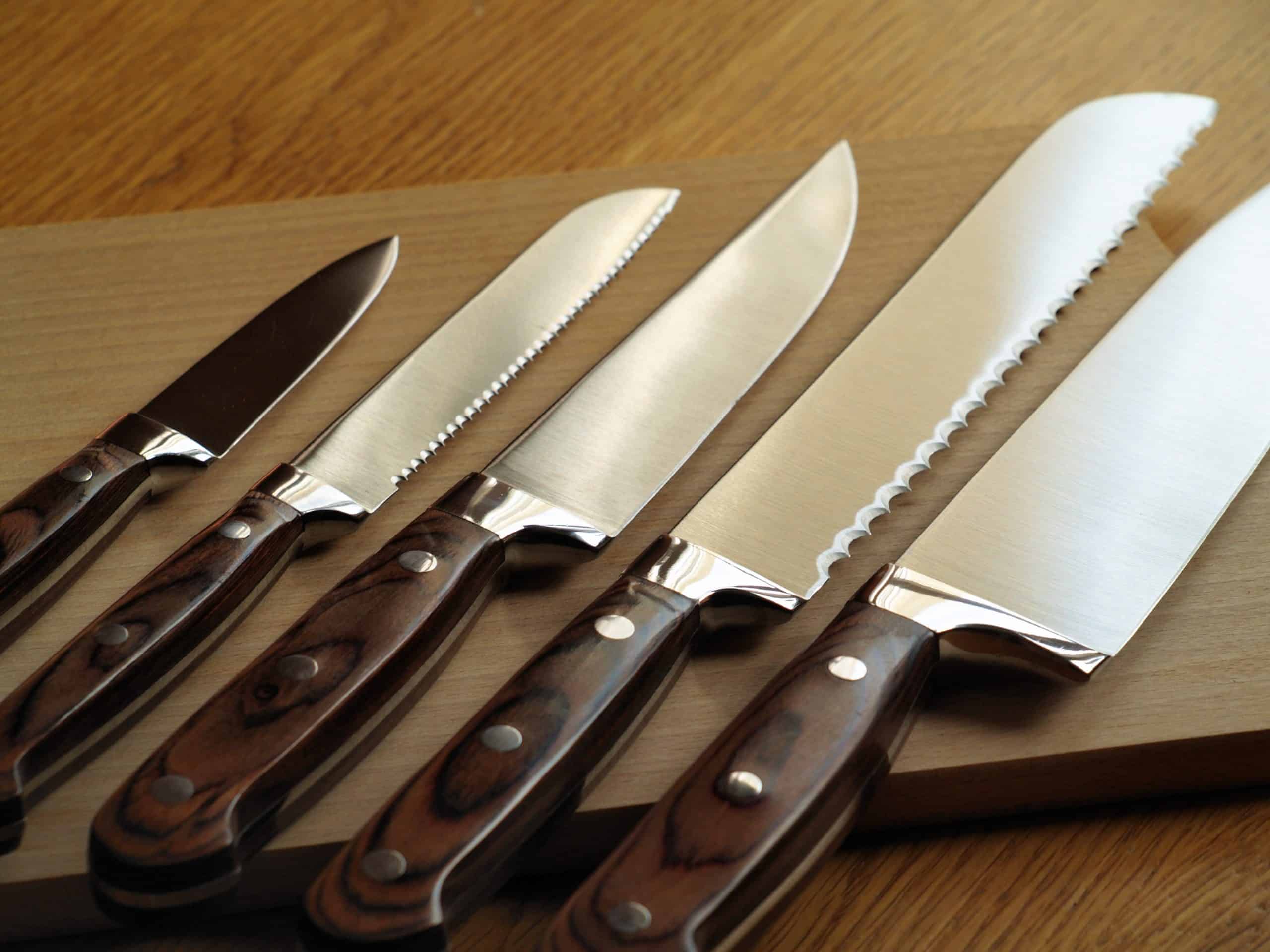
Introduction
A vegetable chopping knife is a must-have kitchen tool. It is the perfect tool for preparing meals, allowing you to chop up vegetables with ease. With its wide blade, it can make quick work of anything in your kitchen and can be used not only for cutting up vegetables, but also for mincing herbs, slicing fruit and shredding cheese. It’s sharp enough to cut through tough fibrous veggies such as leeks, celery or kale and thin enough to easily slide under a juicy tomato or slice carrots into perfect coins. This versatile tool ensures that all of your ingredients are evenly cut so your dishes look attractive and cook evenly without burning. Best of all, having a good quality vegetable chopping knife means you don’t need multiple types of knives for various tasks – one will do it all!
The construction of a vegetable chopping knife makes it very important. The blade should be made from stainless steel for strength and durability and ideally have hollowed edges so there is less resistance when cutting through food. A handle that fits comfortably in your hand makes things easier as you won’t be gripping tightly while chopping which may cause fatigue or accidents in the long run. Paying close attention to the weight of the knife is also key because too heavy could mean that your knife becomes difficult to maneuver while too light could mean it won’t go through tougher vegetables cleanly and quickly.
Being able to correctly use a vegetable chopping knife adds another dimension to cooking delicious meals efficiently. Knowing how much pressure to apply as well as what technique works best can make all the difference between perfectly chopped ingredients or an uneven pile of cubes in your dish! Learning how to use this tool effectively requires practice but ultimately yields efficient and consistent results with each dish you prepare.
Types of Vegetable Chopping Knives
Vegetable chopping knives are essential tools for any kitchen. With a variety of shapes and sizes available, there is something for every kitchen task. Different vegetable chopping knives have different uses and can make all the difference when it comes to speed, precision and efficiency in the kitchen. To help you find the right knife for the job, here is an overview of the most common types of vegetable chopping knives:
Paring Knife: A paring knife is one of the most popular choices when it comes to vegetable chopping. Its smaller size allows it to easily peel, slice or cut delicate vegetables into thin slices. This type is ideal for tasks such as mincing garlic, trimming mushrooms or zesting citrus fruits.
Utility Knife: A utility knife has a slightly bigger blade than a paring knife – usually four to five inches in length – and can fulfill multiple tasks like slicing onions, carrots or celery into cubes. It’s great for many day-to-day jobs such as prepping a tomato for a salad or cutting up ingredients for a stir-fry dish.
Chef’s Knife: A chef’s knife is much larger than either a paring or utility knife (it usually measures eight inches). It can be used to chop through hard vegetables like potatoes and squash; however its large size might make more delicate tasks quite challenging.
Serrated Knife: A serrated knife has saw-like teeth along its edge which makes it perfect for slicing through soft skinned fruits like tomatoes or peaches without squeezing them out of shape; similarly tomatoes with thick skins can also be cut using this blade shape without over crushing them.
Cleaver: The cleaver is typically used to break down tougher cuts of meat; however they can also be used to cut harder vegetables such as pumpkins and root vegetables by applying pressure downwards on their blades. Make sure that you use caution when using this type of blade as they are very sharp edges which could easily cause injury if misused!
Which Vegetable Chopping Knife is Right for You?
When selecting a vegetable chopping knife, it is important to consider the specific qualities of the knife that best suit your needs. First and foremost, you should determine the size of your desired knife. If you plan on primarily cutting small vegetables or herbs, a smaller blade will work best. For larger vegetables, such as onions and potatoes, a slightly larger blade may be more ideal. You can also choose between serrated and non-serrated blades – serrated blades are better for softer foods that require precise slicing, while non-serrated blades are better for firmer produce that requires more force. When it comes to handle design, there are several options available depending on your preferences. Ergonomically designed handles can provide a comfortable grip during use and prevent slipping while slicing through tough materials. Finally, you must decide on the material of your knife; high-quality steel blades are best for durability, while stainless steel provides optimum corrosion resistance. Ultimately, finding the right vegetable chopping knife depends on your intended purposes and individual preferences.
How to Use a Vegetable Chopping Knife for Optimal Results
A vegetable chopping knife is an essential tool in any kitchen. It can be used to quickly and easily mince, dice and chop vegetables into small pieces. To achieve the best results when using one of these knives, here are a few tips.
First, use a sharp knife. This will help minimize waste by allowing you to get the most out of each vegetable as well as make sure that you aren’t exerting too much pressure on the ingredient during the chopping process. A sharp knife should also reduce the risk of cutting yourself.
Second, ensure that you are maintaining a firm yet gentle grip on the handle. Make sure that your index finger is holding onto the bolster (or finger guard) at all times for extra safety and control over precision movements when slicing and dicing vegetables.
Third, it’s important to make sure that you have ample space around your station so that you can move freely when chopping vegetables with your vegetable chopping knife. When there isn’t enough space to spread out ingredients without bumping into other items or individuals in the kitchen, it will be difficult to maintain a steady grip and make accurate cuts on your vegetables.
Fourth, rotate regularly when using the knife. This will help to create even-sized pieces by preventing individual slices or dices from becoming too thin in one area while overly thick in another. Rotating gives you more control over what pieces of vegetables you’re actually producing with each chop or slice.
How to Maintain and Care for Your Vegetable Chopping Knife
Maintaining and caring for your vegetable chopping knife is an important part of keeping it in good condition. Here are some tips to ensure you get the most from your knife:
1. Make sure to keep the blade sharpened by using a regular honing steel. This will ensure that you can easily slice through any tough vegetable with ease.
2. Always store your knife in a clean and dry place, such as a drawer lined with paper or soft cloth, or in a special knife block when not in use. This will reduce the chances of damage to the blade and rusting which can occur if knives are kept out of the element in a damp environment.
3. Avoid submerging or washing your knife in water or exposing it to moisture unnecessarily as this may cause corrosion over time due to exposure to acids contained in food products.
4. To enhance longevity of the blade, hand-wash gently using warm soapy water after every use, being sure not to scrub at it too hard; this could cause damage like chipping which will make slicing difficult and unsafe.
5. Dry off the blade thoroughly once finished washing so as not to encourage any further rusting or corrosion before storing away safely for its next use!
A Seal of Approval
A vegetable chopping knife is one of the most useful tools to have in a kitchen. It has a slightly curved blade that makes it easier to chop and mince vegetables, making quick work of meal preparation. The versatile design ensures that it can also be used for slicing fruits, cheese, and other ingredients with ease. Not only does it save time but its design provides added safety as well since accidental cuts are minimized due to the softer edges on the knife. The materials used for the knife should be sturdy enough to last for years so choose something that is strong, durable, and rust-proof such as stainless steel or ceramic.
The other benefit of having a vegetable chopping knife in your kitchen is that you can easily change up your recipes without having to switch knives often. This allows you to have maximum flexibility when preparing meals every day without constantly switching between different knives – because let’s face it, who wants their hands cramped up from all that cutting? Not only will this prevent fatigue during food preparation but having one designated chopper means you don’t need to worry about cleaning multiple blades either! Plus, apart from being very easy to sharpen and maintain, its strong pointy tip gives more precision when cutting through hard-skinned ingredients including squash and potatoes.















